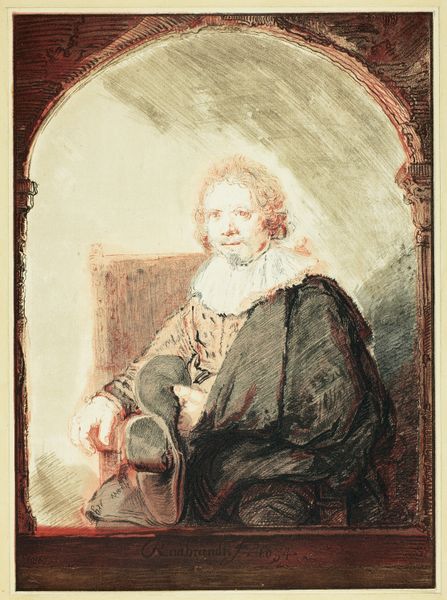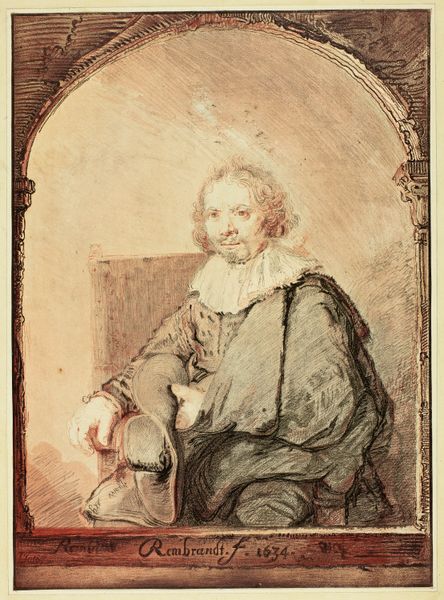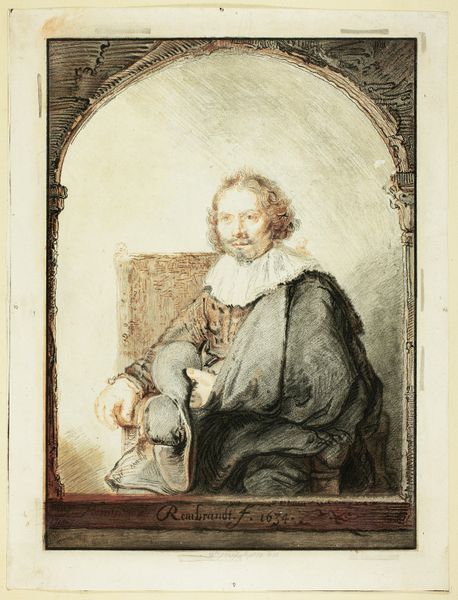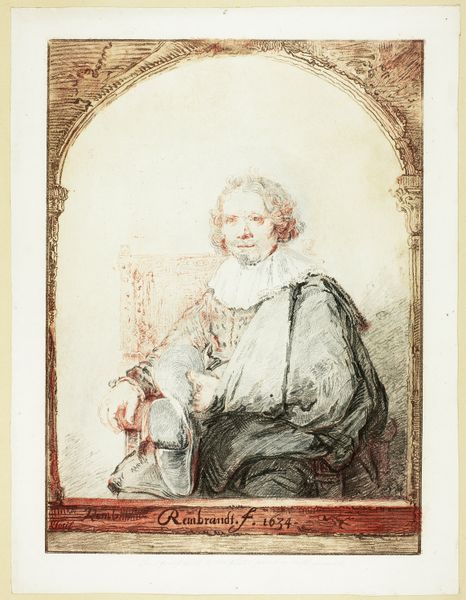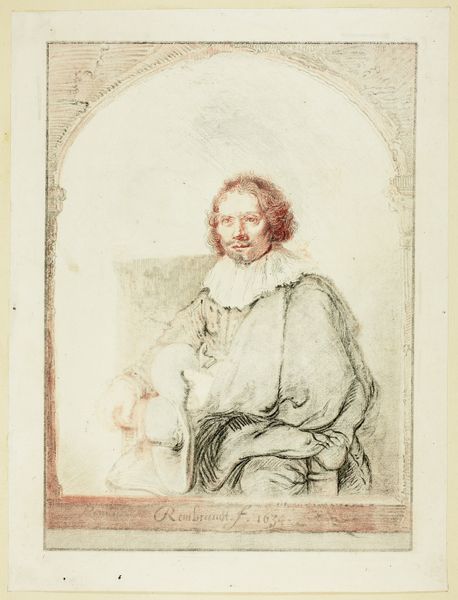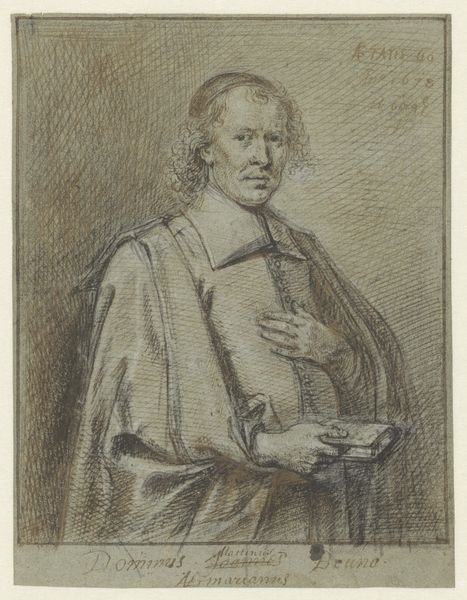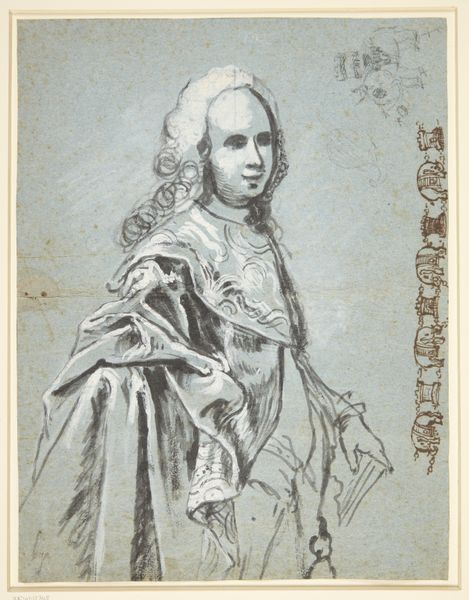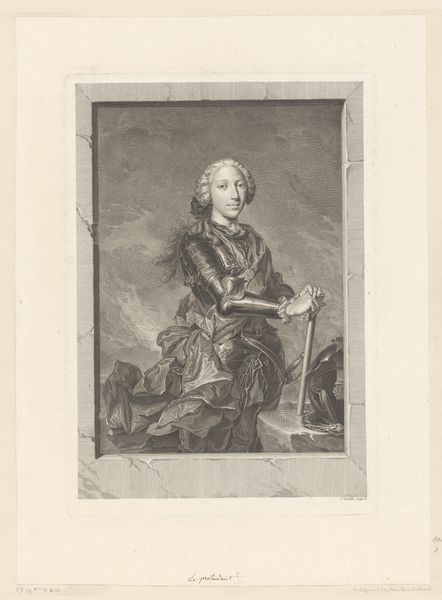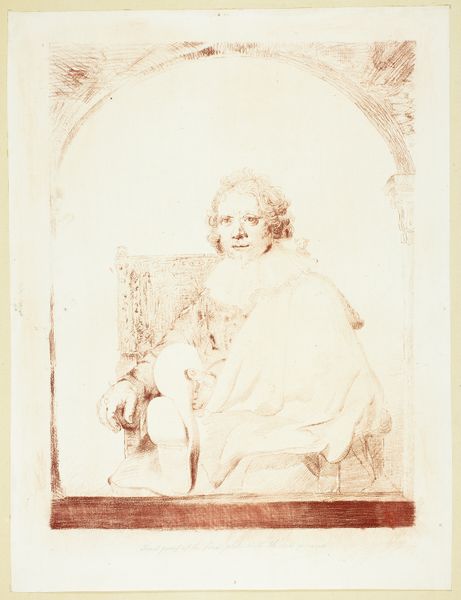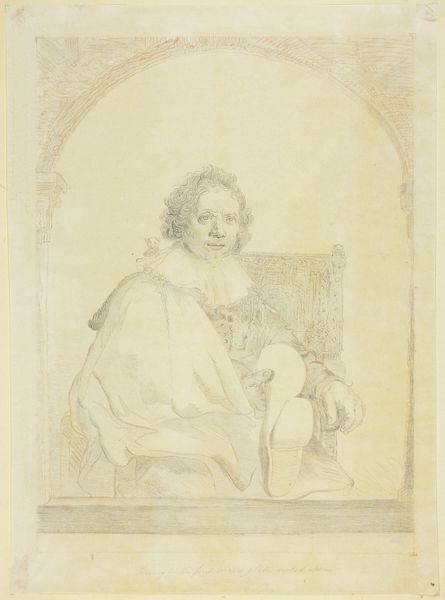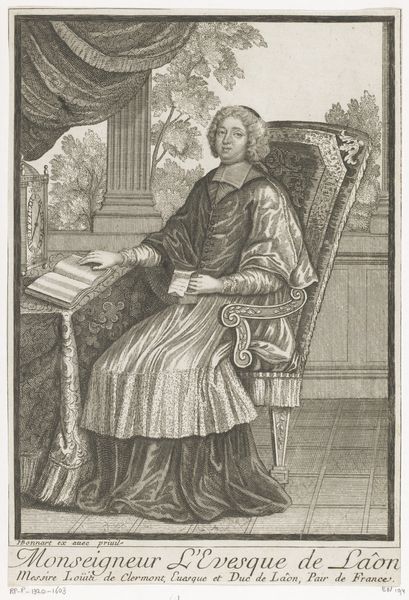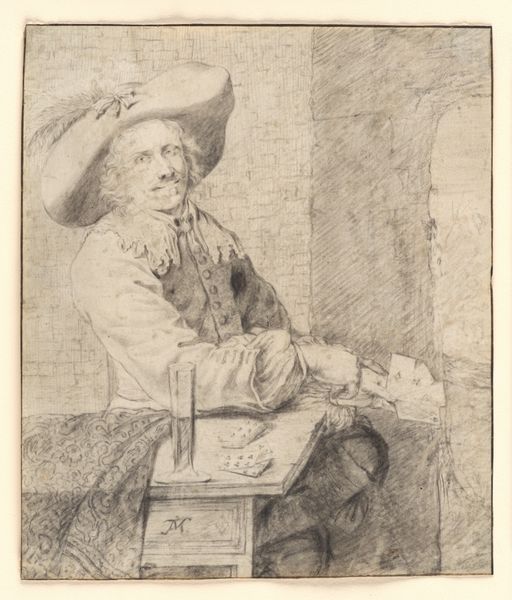
Portrait of a Man in an Arm Chair, from Collection d'imitations de Dessins d'après les Principaux Maîtres Hollandais et Flamands Possibly 1821
0:00
0:00
Dimensions: 377 × 274 mm (image/sheet); 507 × 393 mm (secondary support)
Copyright: Public Domain
Curator: Look at this compelling etching, "Portrait of a Man in an Arm Chair," possibly from 1821, now residing here at The Art Institute of Chicago. The artist is thought to be Christian Josi, from "Collection d'imitations de Dessins d'après les Principaux Maîtres Hollandais et Flamands." Editor: My first thought is how strangely intimate yet detached this man seems. He's in a domestic space, yet there’s a formality to his posture and that large collar that feels like a barrier. It's compelling. Curator: Indeed. The chair itself feels significant—almost throne-like—and then consider the man's relaxed, almost impudent, foot. What narrative do these symbols create? Editor: I think it’s a subtle critique of class and power. He’s clearly a man of means, but his pose disrupts the conventional, stuffy portraiture of the time. The almost careless placement of his foot suggests a subtle rejection of those expectations, a hint of rebellion, even? Curator: Interesting perspective. And I find the framing equally important. He is centered within an arched structure. Is the frame acting like an aureole or an old proscenium? Does that speak to the stagecraft involved in image production? Editor: Perhaps the "stagecraft" you refer to suggests societal constraints and assigned roles, yes. His expression seems… resigned, maybe? Knowing the societal expectations for men of that era—upholding the patriarchy, suppressing emotion, controlling their domains – does his somewhat weary gaze signal a deeper sense of discomfort with these burdens? Curator: It very well could. We cannot ignore his attire: it both announces his position but also shrouds it. The detailed doublet contrasts with a shadowed, concealing overcoat. Are we meant to admire status or question it? The ambiguity adds layers. Editor: Absolutely. By playing with shadow and light like that, there is that strong Baroque style highlighting the internal contradictions of the sitter’s role. That deliberate darkness brings so many uncomfortable ideas to the surface. It resists any easy readings. Curator: It truly invites continuous, deeper consideration, doesn't it? Editor: It does indeed, forcing us to consider the subject, and the forces shaping him from new angles.
Comments
No comments
Be the first to comment and join the conversation on the ultimate creative platform.
